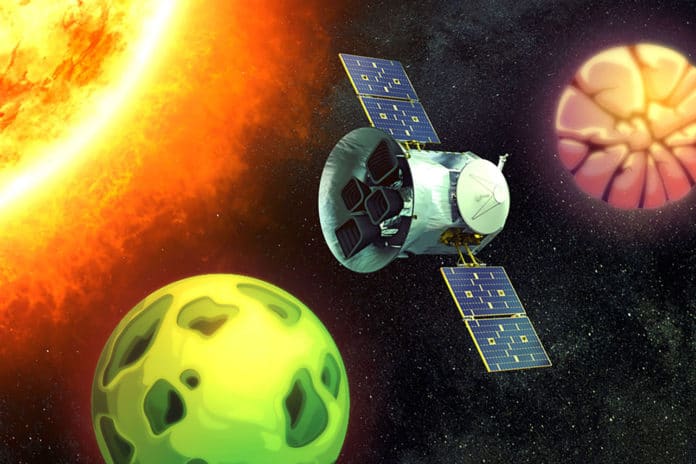Using NASA’s Transiting Exoplanet Survey Satellite (TESS), astronomers at MIT have discovered a new multiplanet system within our galactic neighborhood. The system, which hosts at least two terrestrial, Earth-sized planets, is about 33 light-years from Earth. It is one of the closest known multiplanet systems to our own.
The system’s heart consists of a small, cool M-dwarf star named HD 260655. Planets within the system are likely not habitable because of their relatively tight orbits that make their temperatures too high to sustain liquid surface water.
Scientists are excited about this system because the proximity and brightness of its star will give them a closer look at the properties of the planets and signs of any atmosphere they might hold.
Michelle Kunimoto, a postdoc in MIT’s Kavli Institute for Astrophysics and Space Research and one of the discovery’s leads scientists, said, “Both planets in this system are each considered among the best targets for atmospheric study because of the brightness of their star. Is there a volatile-rich atmosphere around these planets? And are there signs of water or carbon-based species? These planets are fantastic test beds for those explorations.”
The system was discovered in October 2021, when Kunimoto monitored the satellite’s incoming data. She noticed a pair of periodic dips in starlight, or transits, from the star HD 260655.
After several detections, the signals were soon classified as two TESS Objects of Interest, or TOIs. Usually, the process of categorizing and subsequently confirming new planets can often take several years. For HD 260655, that process was shortened significantly with the help of archival data.
After identifying two potential Earth-sized planets around HD 260655, astronomers checked whether other telescopes had previously identified the system. Luckily, the High-Resolution Echelle Spectrometer (HIRES) has listed the system in its survey of stars. Plus, it was also recorded by CARMENES.
To ensure that the incoming signals from TESS were actually from two orbiting planets, scientists looked through the star’s HIRES and CARMENES data. Both surveys measure a star’s gravitational wobble, also known as its radial velocity.
Kunimoto explains, “Every planet orbiting a star has a little gravitational pull on its star. We’re looking for any slight movement of that star that could indicate a planetary-mass object is tugging on it.”
Scientists found statistically significant signs that the signals detected by TESS were indeed two orbiting planets. Then, they observed the data more closely to determine the properties of both planets- their orbital period and size. They found that the inner planet, dubbed HD 260655b, orbits the star every 2.8 days and is about 1.2 times as big as the Earth. The second outer planet, HD 260655c, orbits every 5.7 days and is 1.5 times as big as the Earth.
Scientists also calculated planets’ mass, which is directly related to the amplitude by which each planet tugs on its star. They found the inner planet is about twice as massive as the Earth, while the outer planet is about three Earth masses. From their size and mass, the team estimated each planet’s density. The inner, smaller planet is slightly denser than the Earth, while the outer, larger planet is a bit less dense. Based on their density, both planets are likely terrestrial or rocky in composition.
The surface of the inner planet is a searing 710 kelvins (818 degrees Fahrenheit), whereas the outer planet is roughly 560 K, based on their short orbits (548 F).
Kunimoto said, “We consider that range outside the habitable zone too hot for liquid water to exist on the surface.”
Avi Shporer from MIT said, “But there might be more planets in the system. Many multiplanet systems host five or six planets, especially around small stars like this one. Hopefully, we will find more, and one might be in the habitable zone. That’s optimistic thinking.”
The team will present its discovery today at the meeting of the American Astronomical Society in Pasadena, California.
